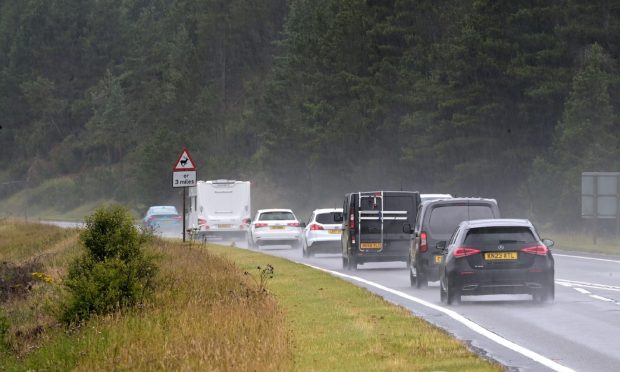New analysis revealing the lack of dualled A-road stretches in the north demonstrates the “complete disregard” for the region, says a Highland road campaigner.
Department for Transport figures analysed by the PA news agency show that fewer than one in 10 A-road miles are dualled in 36 largely rural local authority areas.
This includes Orkney, where no A-road stretches are dualled, and Shetland, Western Isles and Argyll and Bute which only have 0.1% each.
Moray had the seventh lowest dualled A-road stretches in the UK at 0.6% despite having large towns such as Elgin within its boundary.
And in Highland, which covers a third of the land area of Scotland, just 1.9% of A-roads are dualled, which is the 12th lowest total in the UK.
‘Complete disregard’
Laura Hansler, from the A9 Dual Action Group, who wants the route dualled between Perth and Inverness, said it shows a “complete disregard” for the region.
Campaigners are still waiting on a promised timetable for delivering the dualling project, which will no longer be completed by 2025.
She added: “It (the figures) shows the complete lack of funding to put any sustainable infrastructure in. They don’t seem to be interested in directing money our way.
“If it was a case of this happening in the central belt, it would be done.”
The Scottish Government says it remains committed to completing the project.
Meanwhile, it is a different picture in Aberdeen which has the highest number of dualled A-route stretches in Scotland and the seventh highest in the UK.
More than half the city’s A-road miles are dualled at 57.3%, while in Aberdeenshire the total is just 10.7%.
A96 dualling
The SNP has promised to dual the A96 between Aberdeen and Inverness by 2030.
But there are fears over the scheme’s future which is currently subject to an “evidence-based” climate review.
The proportion of A-road miles that are dual carriageway across Britain barely changed in a decade, from 17% in 2012 to 18% in 2022.
The AA said converting single-carriageway A-roads into dual carriageways can “improve traffic flows and air quality whilst reducing collisions”.
AA president Emund King said: “The dualling of key A-roads greatly enhances connectivity and indeed road safety.
“Improving unsafe, congested, single-carriageway roads and building essential bypasses can improve traffic flows and air quality whilst reducing collisions.”
But Steve Gooding, director of motoring research charity the RAC Foundation, said: “For a whole array of financial and environmental reasons, it is implausible to think that we’ll see a large-scale initiative anytime soon to dual our single-carriageway A-roads.
“A more practical and cost-effective answer to improving safety on A-roads is probably to ‘engineer out’ identified problems and hazards rather than try to upgrade hundreds of miles of routes, with all that entails.”
What proportion of A-roads are dualled in north and north-east?
- Aberdeen: 57.3%
- Aberdeenshire: 10.7%
- Highland: 1.9%
- Moray: 0.6%
- Shetland Islands: 0.1%
- Argyll and Bute: 0.1%
- Western Isles: 0.1%
- Orkney Islands: 0%



Conversation